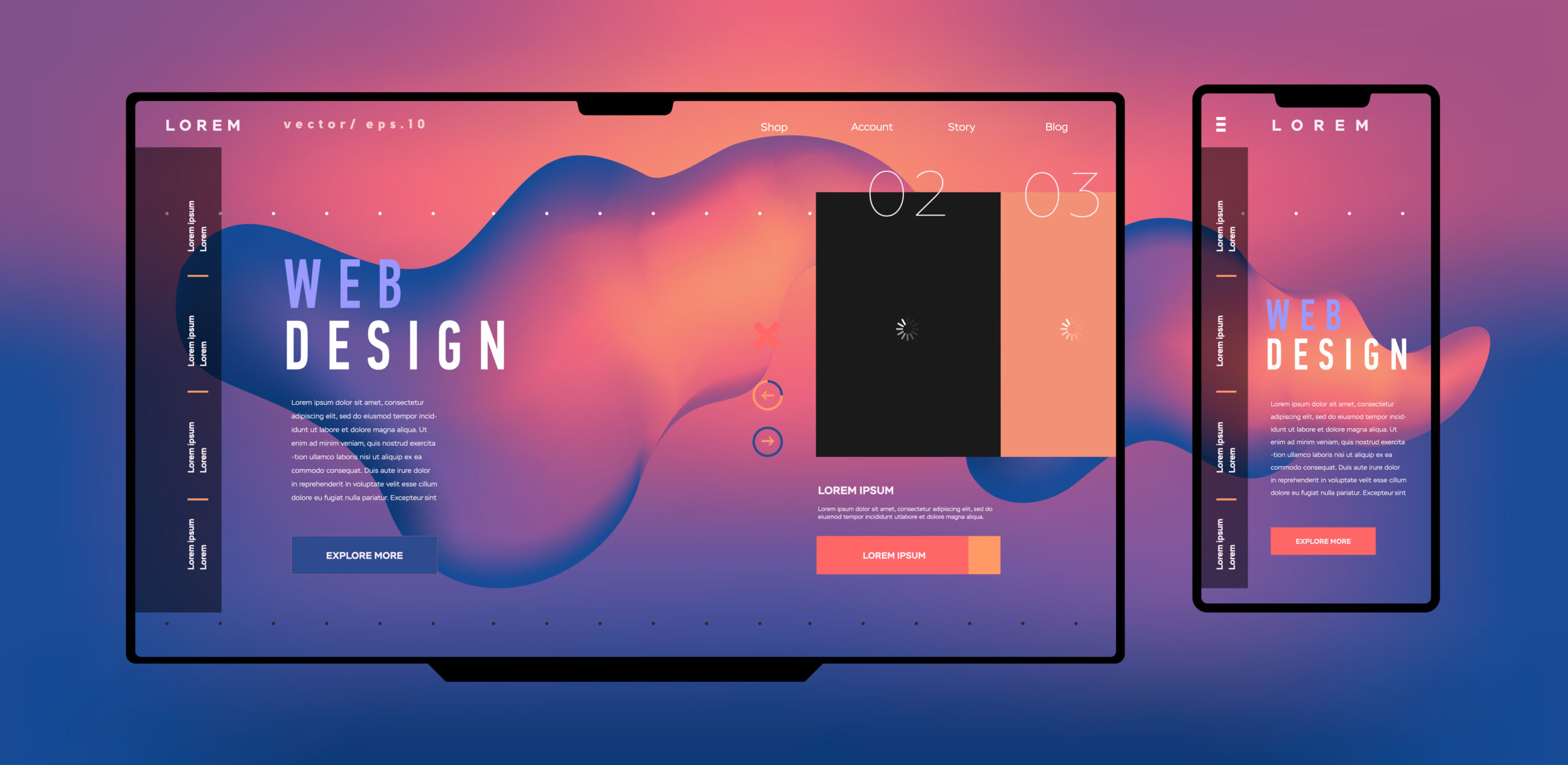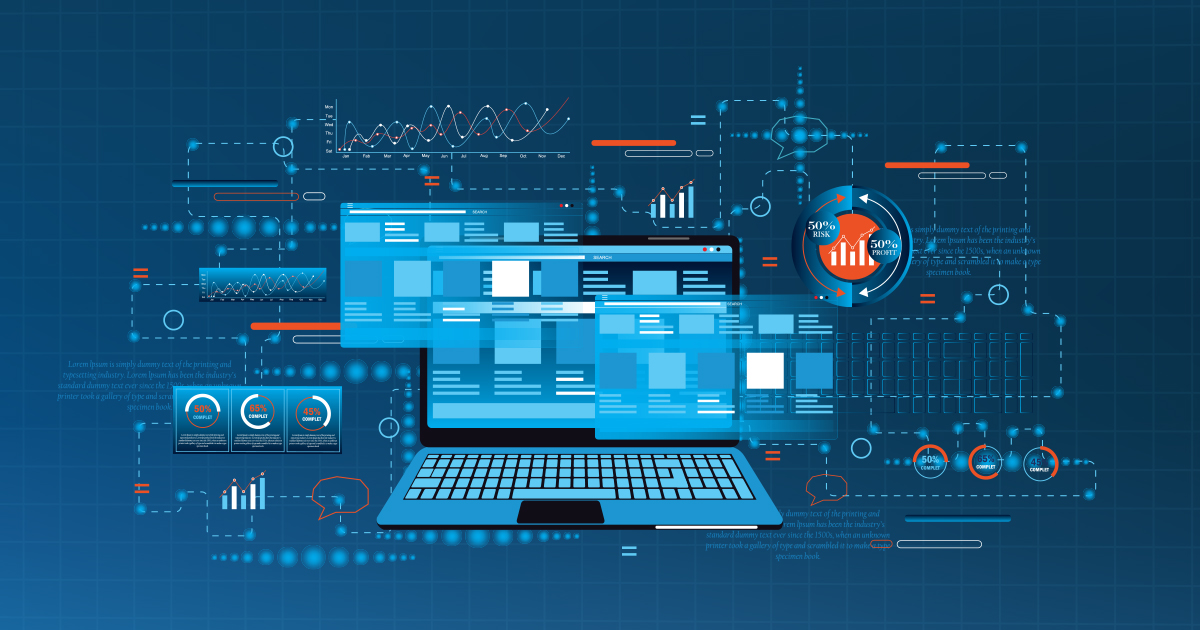Six signs it’s time to partner with a Website Design Agency
Wiki Article
Discovering Imaginative Fads in Web Design for Modern Companies
The landscape of web design is constantly advancing, showing the vibrant requirements of modern services. Current patterns highlight a choice for minimalism, vibrant typography, and interesting interactivity. Companies significantly prioritize user experience through mobile-first concepts and tailored material. In addition, an emphasis on sustainability is getting traction. Understanding these fads is essential for companies intending to attract attention in a congested industry. What ramifications do these changes hold for the future of digital engagement?Accepting Strong Typography
Bold typography has actually become a specifying aspect in contemporary web design, capturing attention and sharing messages with striking clearness. This fad focuses on aesthetically impactful message that enhances user engagement and brand identity. Developers often utilize one-of-a-kind fonts and large typefaces to produce a hierarchy, guiding viewers with content effortlessly.
The strategic usage of vibrant typography enables for reliable storytelling, allowing brand names to interact their values succinctly. It serves not just aesthetic functions yet likewise useful ones, as it improves readability throughout tools and display sizes.
As websites contend for user focus, bold typography stands apart in a saturated electronic landscape. Its adaptability enables developers to try out contrasting shades and layouts, additionally intensifying its efficiency. Ultimately, accepting bold typography represents a change in the direction of more meaningful and communicative web design, promoting a much deeper link in between brand names and their audiences.
The Increase of Minimalist Style
As digital atmospheres come to be significantly messy, the rise of minimalist design provides a revitalizing option that prioritizes simpleness and functionality. This layout viewpoint strips away unnecessary aspects, enabling material to take center stage. By concentrating on tidy lines, enough white room, and a minimal color scheme, minimal style enhances user experience and improves navigation.Services adopting this trend aim to convey their brand name message clearly and properly, fostering a sense of calm and clearness. The lack of interruptions assists users focus on essential details, leading to improved engagement and conversion prices. Furthermore, minimalist design straightens well with mobile-first techniques, ensuring that sites stay user-friendly and easily accessible across different devices.
Inevitably, the surge of minimalist layout shows a broader shift towards focusing on user requirements and preferences, making it an effective device for contemporary organizations seeking to make a lasting influence in the digital landscape.
Immersive Animations and Interactivity
While many web designers embrace minimal appearances, another compelling pattern obtaining traction is using immersive computer animations and interactivity. This approach improves user involvement by producing fascinating experiences that draw site visitors right into the material. Developers utilize vibrant aspects such as computer animated backgrounds, scrolling results, and interactive infographics to interact intricate concepts in an easily accessible fashion.These animations not only supply aesthetic passion however also overview customers through the navigating procedure, making interactions extra user-friendly. As an example, hover impacts and computer animated changes can motivate individuals to discover better, resulting in raised time invested in the site.
This pattern aligns with the more comprehensive activity towards narration in web design, where computer animations offer as narrative gadgets that communicate brand name messages efficiently. By integrating immersive animations and interactivity, organizations can distinguish themselves in a crowded online landscape, ultimately enhancing user satisfaction and brand name loyalty.
Mobile-First Design Principles
Mobile-first design concepts emphasize focusing on user experience by making sure web sites work flawlessly on smaller screens. This technique incorporates responsive layout methods that adapt to different device dimensions while preserving aesthetic stability. Additionally, it focuses on touchscreen navigating style, enhancing use for mobile users.Focusing On User Experience
How can developers properly focus on user experience in a progressively mobile-centric globe? Emphasizing mobile-first style principles is necessary, as customers mainly engage with internet sites through smart phones. This strategy encourages developers to streamline material, guaranteeing it is accessible and easily obtainable on smaller screens. Secret practices consist of simplifying navigation, minimizing tons times, and using touch-friendly components that enhance interactivity. In addition, focusing on legible typography and intuitive layouts can greatly enhance user contentment. Designers must continuously gather user feedback to fine-tune their techniques, adjusting to evolving user needs and preferences. By focusing on these elements, companies can produce an interesting electronic experience that cultivates commitment and drives conversions, inevitably straightening with the expectations these days's mobile individuals.Receptive Design Methods
Developers accept receptive format techniques to produce adaptable and adaptive web experiences that satisfy various screen dimensions. This approach focuses on mobile-first layout concepts, making sure peak performance on smaller sized tools before scaling up for larger screens. By using fluid grids, versatile photos, and media queries, designers can keep a natural aesthetic identification across all platforms. This approach not just improves user involvement but likewise enhances search engine positions, as mobile-friendly sites are preferred by search formulas. Additionally, receptive layouts permit companies to get to a more comprehensive target market, suiting customers on desktop computers, smart devices, and tablet computers alike. Overall, carrying out these techniques is necessary for contemporary web design, ensuring that services remain affordable in an ever-evolving electronic landscape.Touchscreen Navigation Design
With the increase of mobile phones, touchscreen navigation has actually become a basic element of web design. Designers are increasingly taking on mobile-first concepts to improve user experience and engagement. agency for web design. Reliable touchscreen navigation prioritizes bigger buttons and user-friendly motions, permitting individuals to engage conveniently with web content. This approach reduces irritation and motivates exploration, as individuals can navigate flawlessly with their fingers. Furthermore, incorporating swipe motions and faucet functionality caters to the all-natural behaviors of mobile customers. Feedback mechanisms, such as aesthetic cues and computer animations, enhance functionality even more by confirming actions. As touchscreens dominate user interactions, using these style components not only lines up with contemporary assumptions but also cultivates a much more enjoyable and easily accessible surfing experience for all customersPersonalized User Experiences
What makes an individual really feel really involved on a website? The response usually lies in personalized user experiences. By tailoring content and navigation to specific choices, services can produce a significant connection with their audience. This customization can be attained with numerous approaches, such as examining user habits, making use of cookies, and using tailored suggestions based on previous communications.Shopping platforms that recommend items based on browsing history not only boost YOURURL.com user experience however additionally enhance conversion rates. Integrating vibrant material that adjusts to the user's location or time of day can better enrich interaction.
Furthermore, customized introductions or messages can make customers feel valued and recognized. As modern-day organizations endeavor to attract attention in a competitive electronic landscape, embracing individualized user experiences comes to be necessary, fostering loyalty and motivating repeat gos to. Eventually, this approach transforms a standard web site right into an interactive system that resonates with its target market.
Sustainability in Web Design
As the digital landscape proceeds to advance, the importance of sustainability in web design has acquired significant focus. Developers are increasingly familiar with the ecological influence their creations can have, triggering a change in the direction of environmentally friendly techniques (web design company). Lasting web design concentrates on maximizing websites to reduce power usage and carbon footprints. Methods include utilizing minimalistic layout principles, enhancing pictures, and employing efficient coding practices to enhance loading speedsThe option of hosting companies plays a necessary role; lots of designers are now opting for environment-friendly organizing solutions powered by sustainable energy. By prioritizing accessibility and user-friendly navigation, lasting styles also accommodate a more comprehensive target market, boosting functionality. This conscious strategy not just interest environmentally-minded customers yet additionally adds to the overall long life and efficiency of web sites. Eventually, sustainability in web design reflects a growing pattern in the direction of liable electronic practices that align with modern-day service values.

Regularly Asked Questions
How Can I Select the Right Color Pattern for My Website?
To pick the right shade system for a site, one should think about the brand name's identity, target market, and emotional influence. Using shade concept and screening combinations can enhance user experience and visual appeal considerably.What Are the most effective Devices for Prototyping Website Design?
The very best tools for prototyping internet styles include Figma, Lay out, Adobe XD, and InVision. These systems supply user-friendly interfaces, partnership functions, and considerable libraries, making them excellent for developers to develop pop over here and fine-tune their ideas successfully.Exactly how Do I Determine the Efficiency of My Web Design?
To determine web design efficiency, one should analyze user engagement metrics, conversion rates, and usability responses (web design company). A/B testing and heatmaps can likewise give understandings into user behavior, leading needed adjustments for improved efficiency and user experienceWhat Prevail Web Design Mistakes to Avoid?
Usual web design errors consist of messy layouts, inadequate navigating, sluggish loading times, lack of mobile optimization, insufficient contrast, and neglecting user responses. Avoiding these mistakes boosts user experience and enhances general performance of the site.How Frequently Should I Update My Web Site Design?
An internet site layout need to be updated every 2 to 3 years, or faster if considerable changes in branding or modern technology happen. Normal updates keep the site fresh, practical, and aligned with existing user expectations.
Report this wiki page